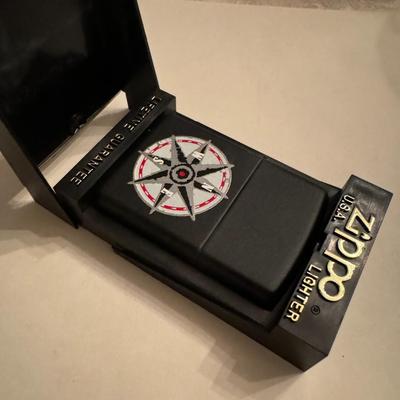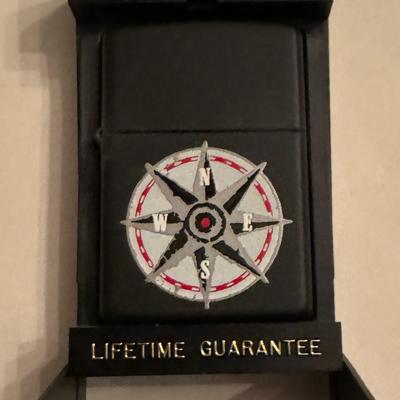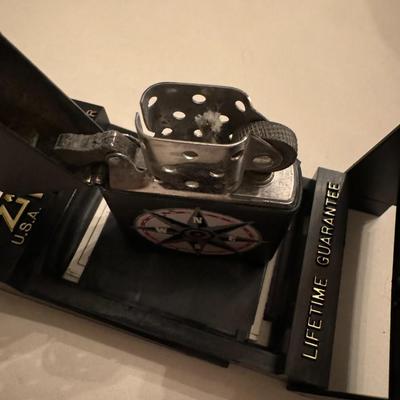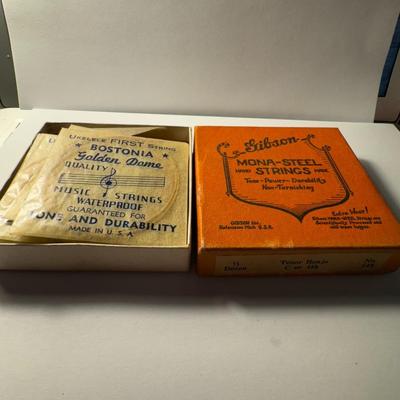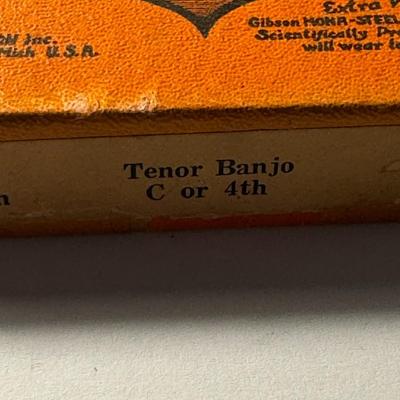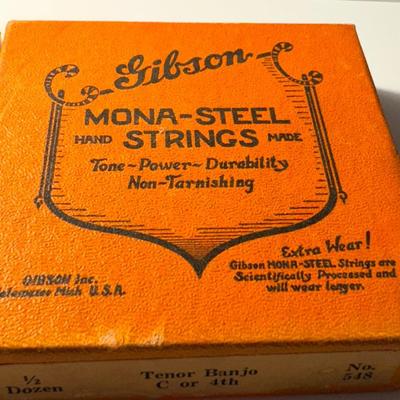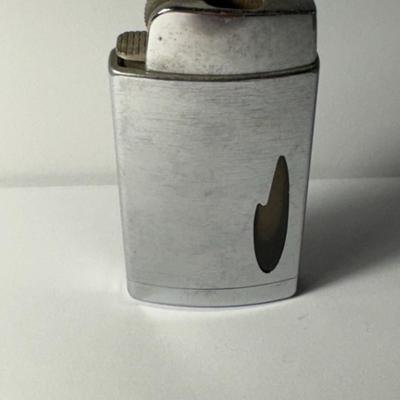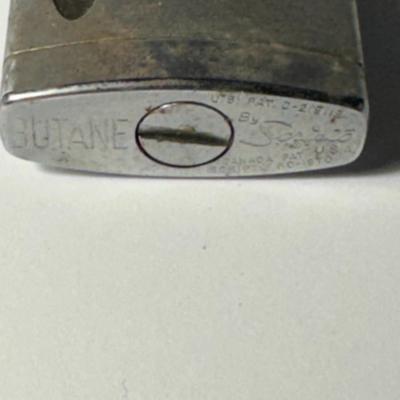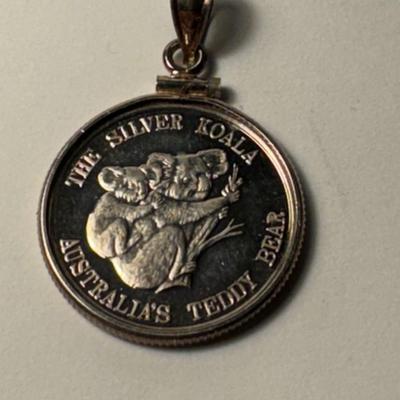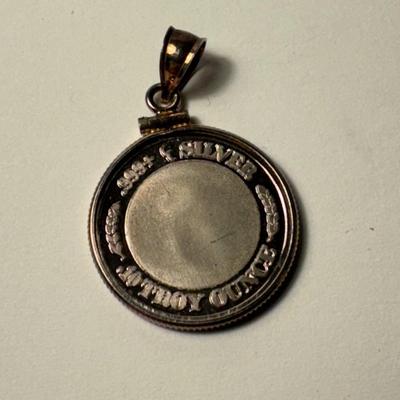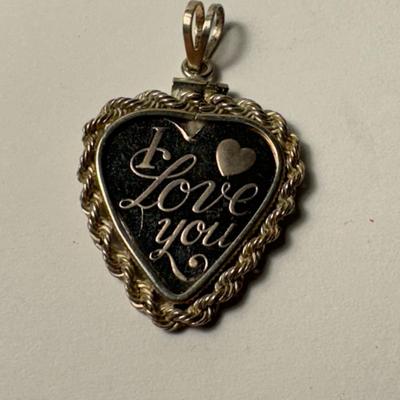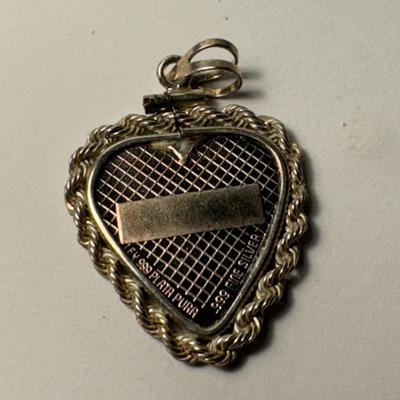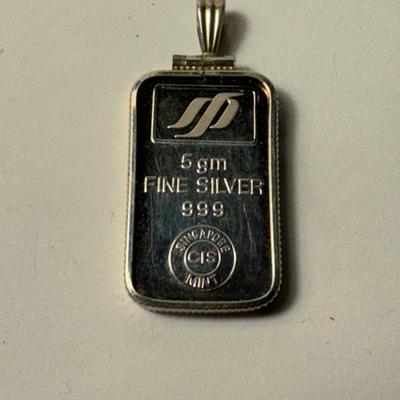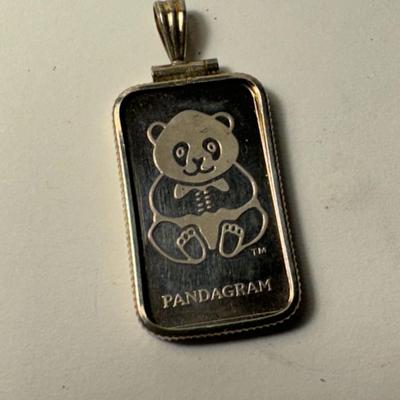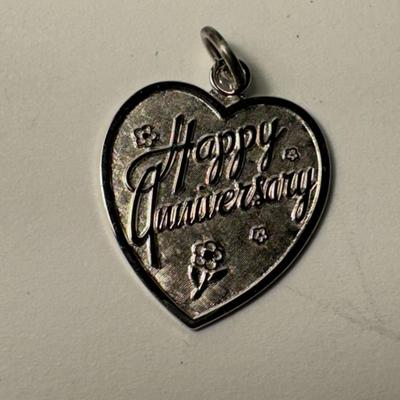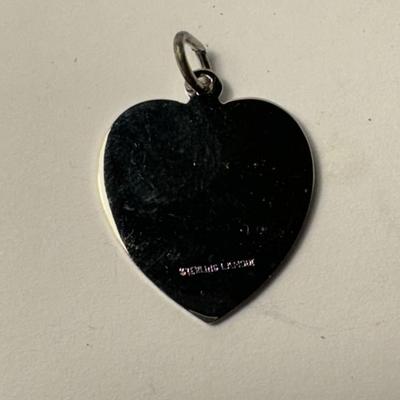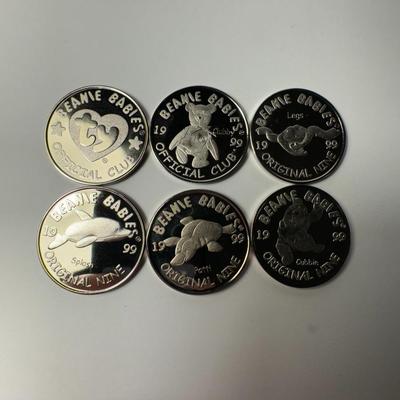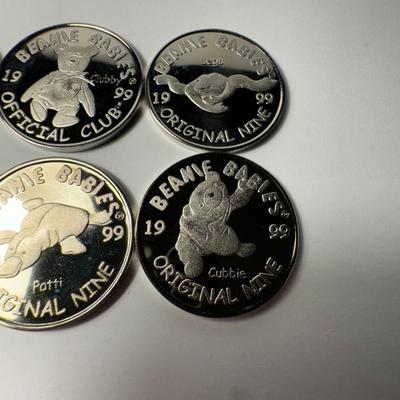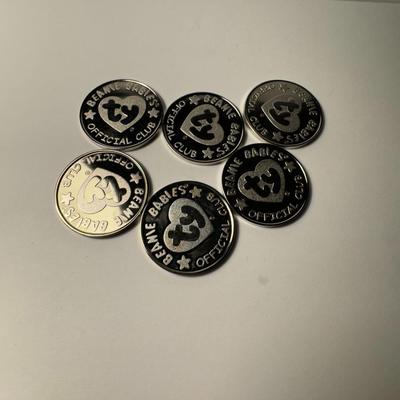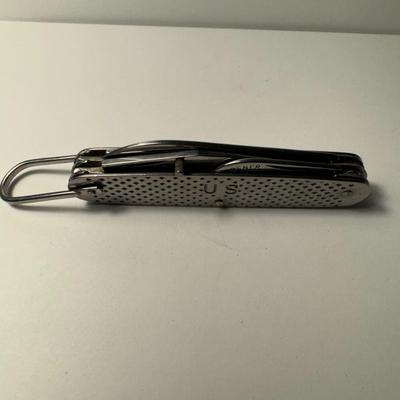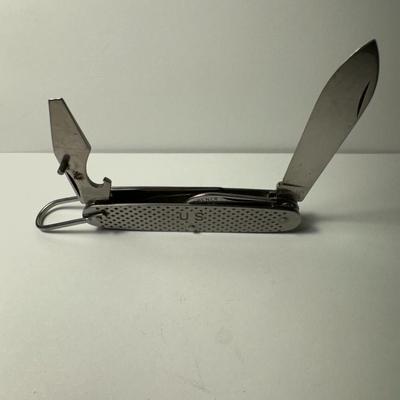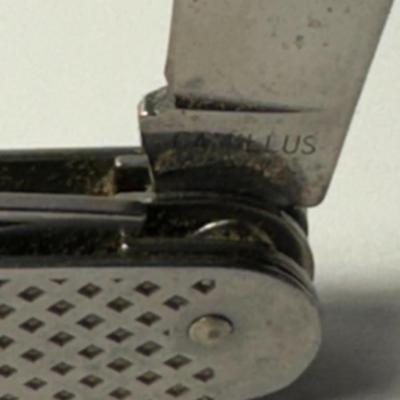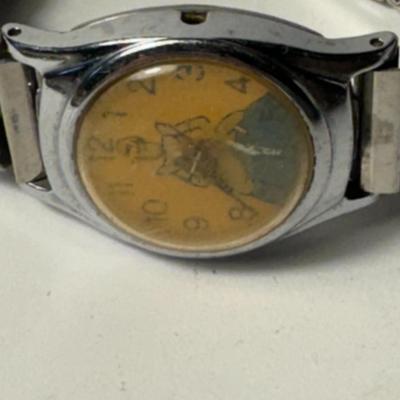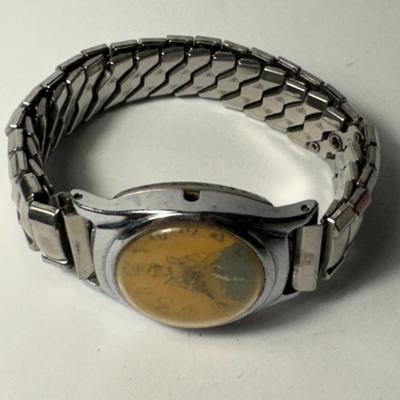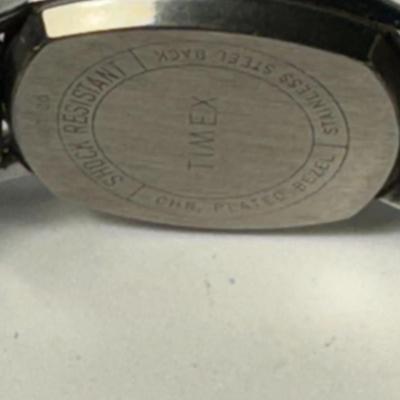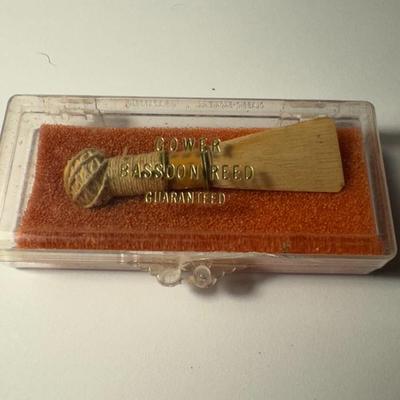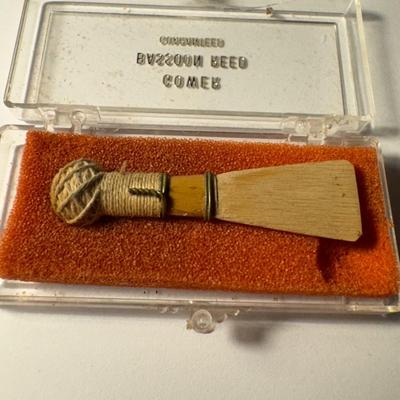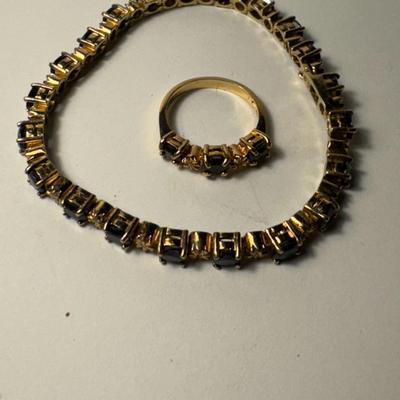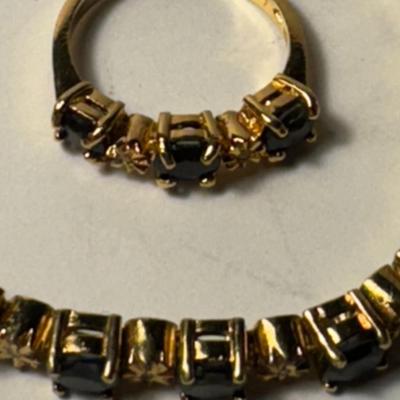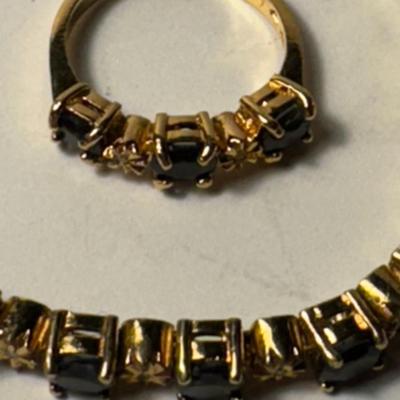-
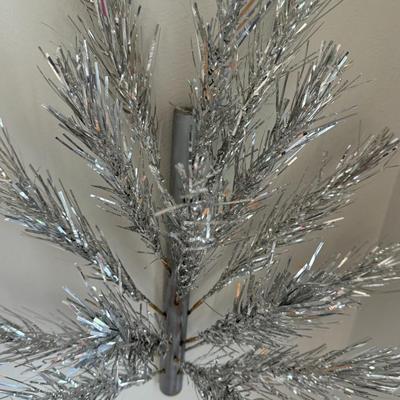
vintage "The Holiday" brand aluminum wall or door hanging Christmas tree, specifically Model K2000. Here's a summary of the item: Product: A vintage "The Holiday" aluminum Christmas tree designed to be hung on a wall or door, saving floor space. Model: K2000. Features: Branches packed in reusable storage tubes. Can be hung on any picture hook. Made from flame-proof aluminum, designed to last for years. Suitable for decorating like a full tree with lightweight ornaments. Era: These types of aluminum Christmas trees, including "The Holiday" brand, were popular during the mid-20th century, particularly in the 1950s and 60 701 / 1369 -
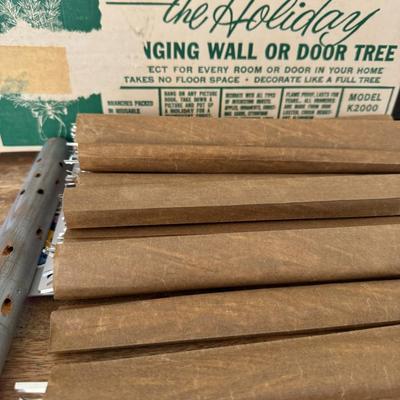
vintage "The Holiday" brand aluminum wall or door hanging Christmas tree, specifically Model K2000. Here's a summary of the item: Product: A vintage "The Holiday" aluminum Christmas tree designed to be hung on a wall or door, saving floor space. Model: K2000. Features: Branches packed in reusable storage tubes. Can be hung on any picture hook. Made from flame-proof aluminum, designed to last for years. Suitable for decorating like a full tree with lightweight ornaments. Era: These types of aluminum Christmas trees, including "The Holiday" brand, were popular during the mid-20th century, particularly in the 1950s and 60 702 / 1369 -
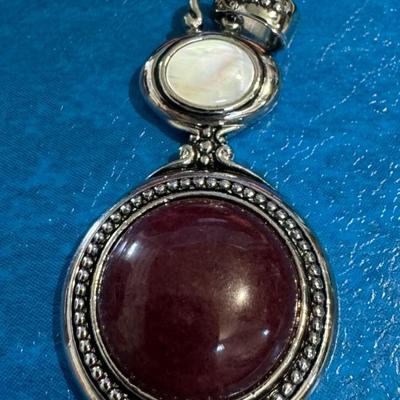
Lia Sophia "Lisa" Slide Pendant featuring a combination of Mother of Pearl and Red Jasper stones set in a silver-tone metal. Here's more information about this pendant: Design and Materials: The pendant showcases a prominent round red jasper stone and a smaller, oval Mother of Pearl inlay, both secured within an ornate silver-tone setting with a Victorian meets Bo-Ho motif featuring flourishes and domed beads. Origin and Collection Name: This vintage piece dates back to the 1990s and is part of Lia Sophia's "Lisa" collection, which is believed to be named after Lisa Kiam, daughter of company founder Victor Kiam. Dimensions: The pendant typically measures around 2.5 inches in height and 1.10 inches in width, making it a noticeable statement piece. Company History: Lia Sophia was a jewelry company known for its direct sales model and the trademark "Share the Love of Jewelry," operating from 1986 until its closure around 2014 703 / 1369 -
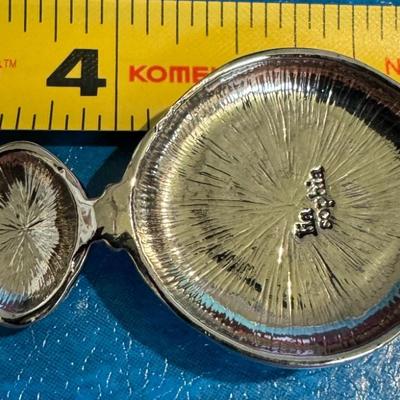
Lia Sophia "Lisa" Slide Pendant featuring a combination of Mother of Pearl and Red Jasper stones set in a silver-tone metal. Here's more information about this pendant: Design and Materials: The pendant showcases a prominent round red jasper stone and a smaller, oval Mother of Pearl inlay, both secured within an ornate silver-tone setting with a Victorian meets Bo-Ho motif featuring flourishes and domed beads. Origin and Collection Name: This vintage piece dates back to the 1990s and is part of Lia Sophia's "Lisa" collection, which is believed to be named after Lisa Kiam, daughter of company founder Victor Kiam. Dimensions: The pendant typically measures around 2.5 inches in height and 1.10 inches in width, making it a noticeable statement piece. Company History: Lia Sophia was a jewelry company known for its direct sales model and the trademark "Share the Love of Jewelry," operating from 1986 until its closure around 2014 704 / 1369 -
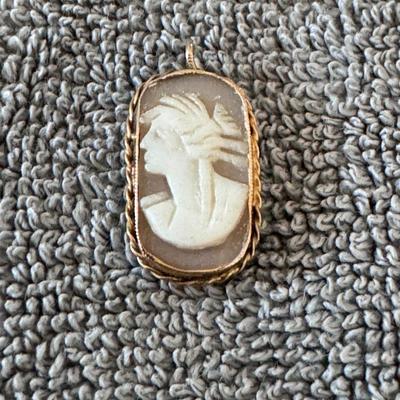
The image shows an intricately carved cameo pendant, likely a vintage or antique piece. Cameos are a traditional form of jewelry featuring a raised relief carving, most commonly of a profile portrait, set against a contrasting background. Here's more information about cameos: Materials & Craftsmanship: Historically, cameos are carved from natural materials like shell, hardstone (agate, onyx), or coral, utilizing the material's different colored layers to create the relief effect. Shell cameos, particularly from conch or sardonyx shells, are very common, while hardstone cameos are often found in agate or onyx. Historical Significance: The art of cameo carving dates back to ancient civilizations like Egypt and Rome, with significant revivals during the Renaissance and the Victorian era, when they became highly fashionable accessories. Queen Victoria's fondness for cameos helped popularize them widely. 708 / 1369 -
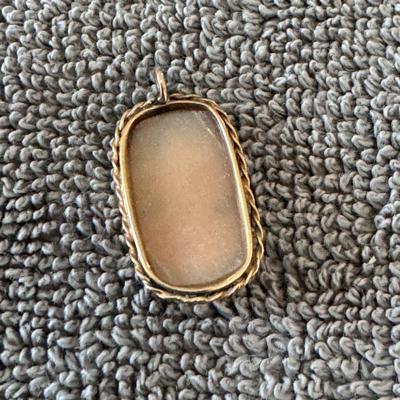
The image shows an intricately carved cameo pendant, likely a vintage or antique piece. Cameos are a traditional form of jewelry featuring a raised relief carving, most commonly of a profile portrait, set against a contrasting background. Here's more information about cameos: Materials & Craftsmanship: Historically, cameos are carved from natural materials like shell, hardstone (agate, onyx), or coral, utilizing the material's different colored layers to create the relief effect. Shell cameos, particularly from conch or sardonyx shells, are very common, while hardstone cameos are often found in agate or onyx. Historical Significance: The art of cameo carving dates back to ancient civilizations like Egypt and Rome, with significant revivals during the Renaissance and the Victorian era, when they became highly fashionable accessories. Queen Victoria's fondness for cameos helped popularize them widely. 709 / 1369 -
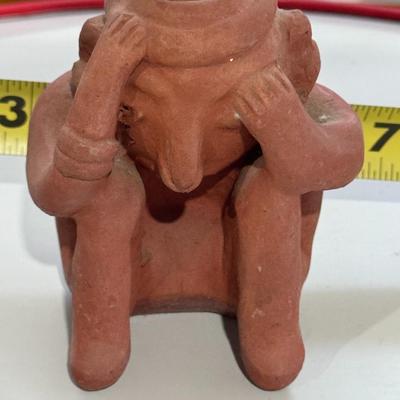
The terracotta figure in the image is a vintage promotional item used by Schering Pharmaceuticals to advertise the drug Etrafon, which was prescribed for anxiety and depression. Key details about this figure: Origin: It is a reproduction of an ancient terracotta figure from Nayarit, Mexico, dating back to approximately 400-800 A.D. Purpose: These figures, often referred to as "Portrait of Anxiety/Depression," were given to doctors by Schering as part of their marketing efforts for Etrafon, a medication for mental health conditions. Significance: It represents a unique intersection of ancient art and modern pharmaceutical advertising, depicting a poignant visual representation of the conditions Etrafon aimed to treat. 710 / 1369 -
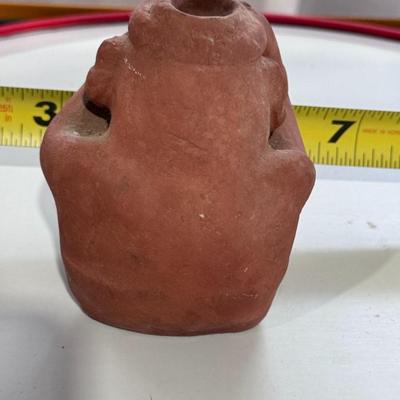
The terracotta figure in the image is a vintage promotional item used by Schering Pharmaceuticals to advertise the drug Etrafon, which was prescribed for anxiety and depression. Key details about this figure: Origin: It is a reproduction of an ancient terracotta figure from Nayarit, Mexico, dating back to approximately 400-800 A.D. Purpose: These figures, often referred to as "Portrait of Anxiety/Depression," were given to doctors by Schering as part of their marketing efforts for Etrafon, a medication for mental health conditions. Significance: It represents a unique intersection of ancient art and modern pharmaceutical advertising, depicting a poignant visual representation of the conditions Etrafon aimed to treat. 711 / 1369 -
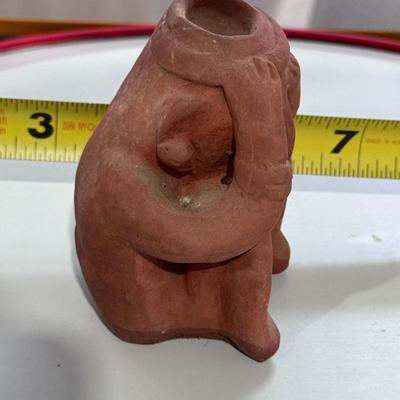
The terracotta figure in the image is a vintage promotional item used by Schering Pharmaceuticals to advertise the drug Etrafon, which was prescribed for anxiety and depression. Key details about this figure: Origin: It is a reproduction of an ancient terracotta figure from Nayarit, Mexico, dating back to approximately 400-800 A.D. Purpose: These figures, often referred to as "Portrait of Anxiety/Depression," were given to doctors by Schering as part of their marketing efforts for Etrafon, a medication for mental health conditions. Significance: It represents a unique intersection of ancient art and modern pharmaceutical advertising, depicting a poignant visual representation of the conditions Etrafon aimed to treat. 712 / 1369 -
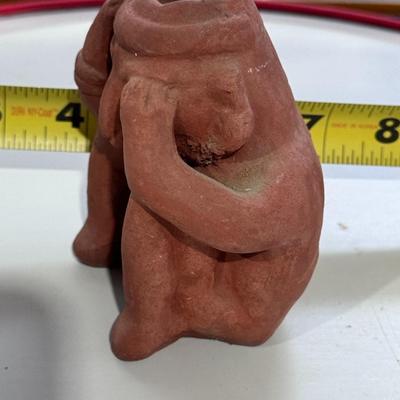
The terracotta figure in the image is a vintage promotional item used by Schering Pharmaceuticals to advertise the drug Etrafon, which was prescribed for anxiety and depression. Key details about this figure: Origin: It is a reproduction of an ancient terracotta figure from Nayarit, Mexico, dating back to approximately 400-800 A.D. Purpose: These figures, often referred to as "Portrait of Anxiety/Depression," were given to doctors by Schering as part of their marketing efforts for Etrafon, a medication for mental health conditions. Significance: It represents a unique intersection of ancient art and modern pharmaceutical advertising, depicting a poignant visual representation of the conditions Etrafon aimed to treat. 713 / 1369 -
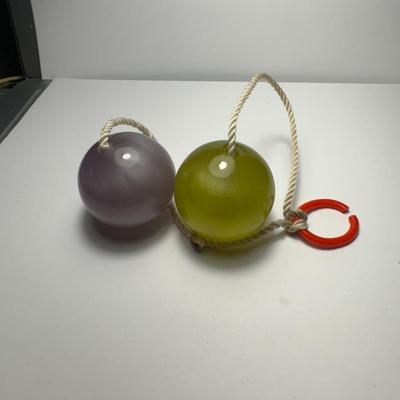
vintage Clackers, also known as Clacker Balls, a popular toy from the late 1960s and early 1970s. They consist of two hard spheres (originally glass, later plastic) on a string attached to a handle or finger tab. The goal is to swing them up and down, making them hit each other and create a "clacking" sound. The specific clackers in the image are green and purple 714 / 1369 -
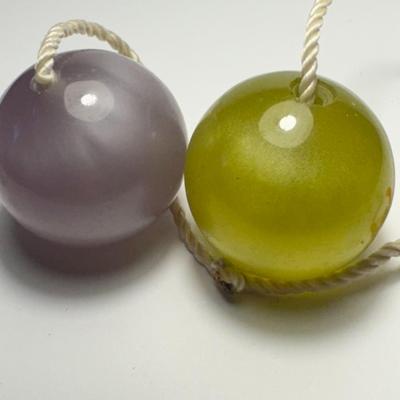
vintage Clackers, also known as Clacker Balls, a popular toy from the late 1960s and early 1970s. They consist of two hard spheres (originally glass, later plastic) on a string attached to a handle or finger tab. The goal is to swing them up and down, making them hit each other and create a "clacking" sound. The specific clackers in the image are green and purple 715 / 1369 -
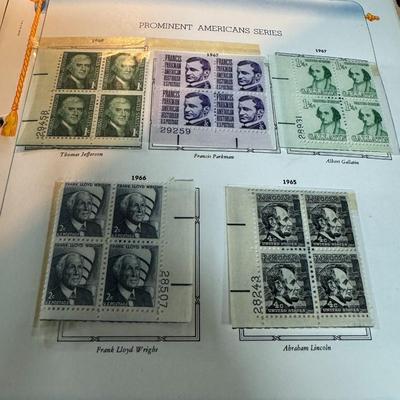
Album is fully populated 300 plus pages 716 / 1369 -
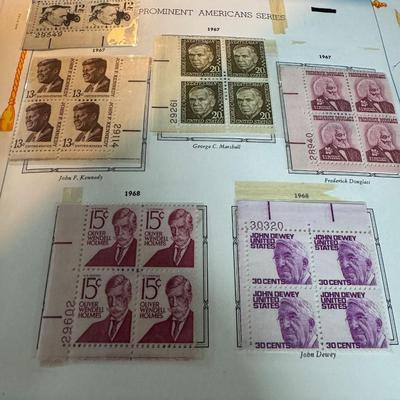
Album is fully populated 300 plus pages 717 / 1369 -
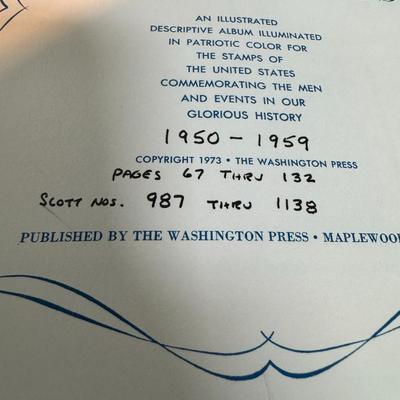
Album is fully populated 300 plus pages 718 / 1369 -
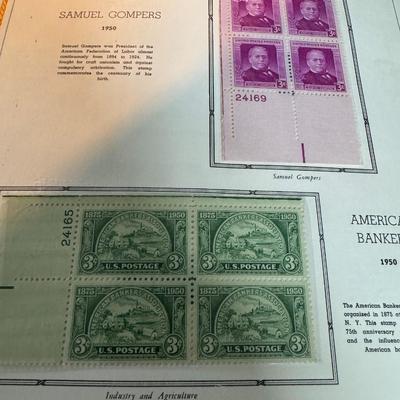
Album is fully populated 300 plus pages 719 / 1369 -
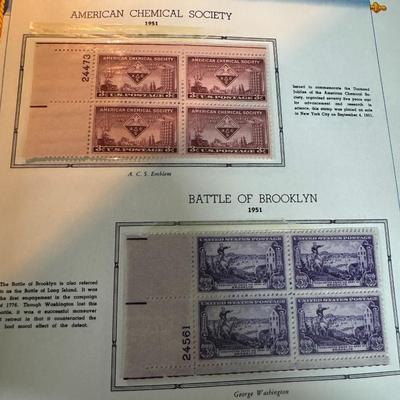
Album is fully populated 300 plus pages 720 / 1369 -
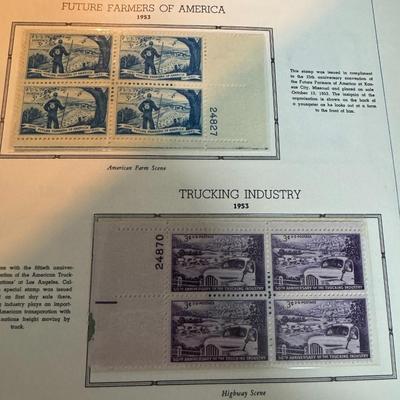
Album is fully populated 300 plus pages 721 / 1369 -
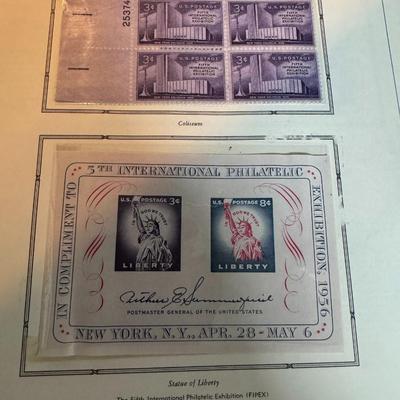
Album is fully populated 300 plus pages 722 / 1369 -
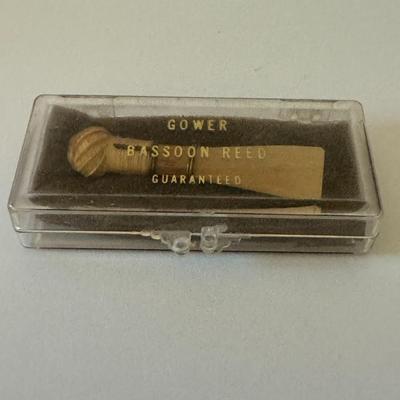
Gower bassoon reed in its original packaging, which states "GUARANTEED". Gower reeds were once considered a popular factory-made option known for consistency and a focused, warm sound. However, user reviews suggest that the quality of these reeds could be inconsistent, with some being out of tune and needing adjustment. There are indications that Gower reeds may no longer be actively manufactured or are less readily available than in the past. 723 / 1369 -
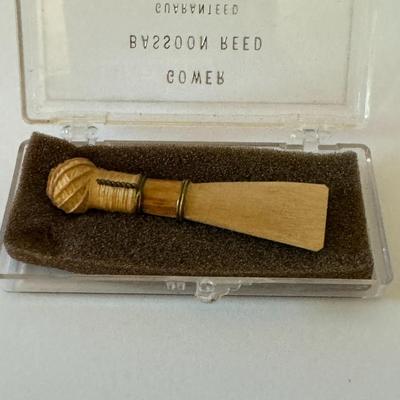
Gower bassoon reed in its original packaging, which states "GUARANTEED". Gower reeds were once considered a popular factory-made option known for consistency and a focused, warm sound. However, user reviews suggest that the quality of these reeds could be inconsistent, with some being out of tune and needing adjustment. There are indications that Gower reeds may no longer be actively manufactured or are less readily available than in the past. 724 / 1369 -
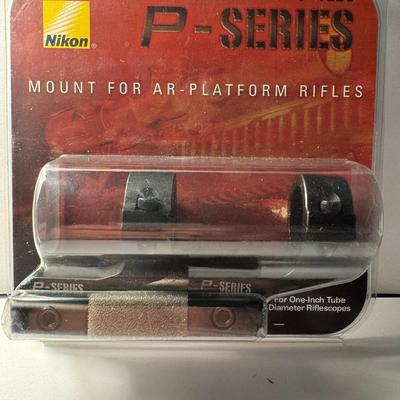
Mount for AR- Platform rifles 725 / 1369 -
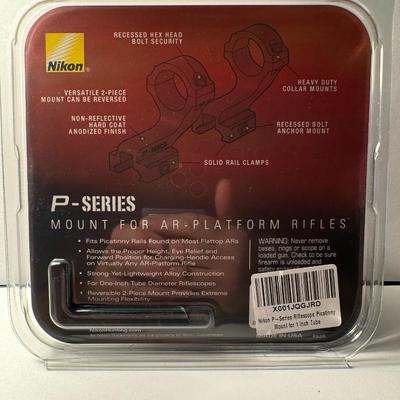
Mount for AR- Platform rifles 726 / 1369 -
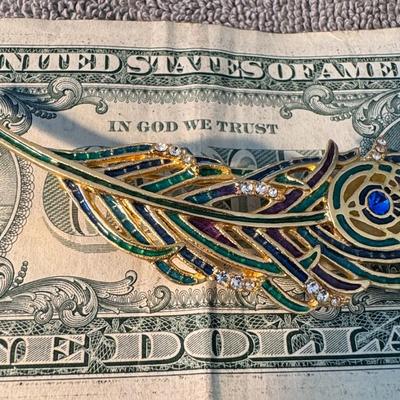
vintage peacock feather brooch, likely from the Metropolitan Museum of Art (MMA) collection. This type of brooch is often identified as a Vintage MMA Peacock Feather Brooch or a Metropolitan Museum Art Nouveau Peacock Feather Brooch. Here's more information about the brooch: Design & Materials: It features a detailed peacock feather design, often crafted in gold-plated metal with vibrant enamel in jewel tones like green, blue, and plum, and adorned with rhinestones. The specific brooch in the image appears to be gold-toned with blue and green enamel and clear rhinestones, featuring a prominent blue stone in the "eye" of the feather. Origin: The "MMA" signature found on the reverse of similar brooches confirms their origin from the Metropolitan Museum of Art's line of historically inspired jewelry. 727 / 1369 -
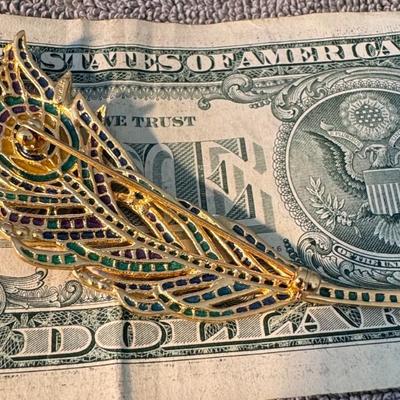
vintage peacock feather brooch, likely from the Metropolitan Museum of Art (MMA) collection. This type of brooch is often identified as a Vintage MMA Peacock Feather Brooch or a Metropolitan Museum Art Nouveau Peacock Feather Brooch. Here's more information about the brooch: Design & Materials: It features a detailed peacock feather design, often crafted in gold-plated metal with vibrant enamel in jewel tones like green, blue, and plum, and adorned with rhinestones. The specific brooch in the image appears to be gold-toned with blue and green enamel and clear rhinestones, featuring a prominent blue stone in the "eye" of the feather. Origin: The "MMA" signature found on the reverse of similar brooches confirms their origin from the Metropolitan Museum of Art's line of historically inspired jewelry. 728 / 1369 -
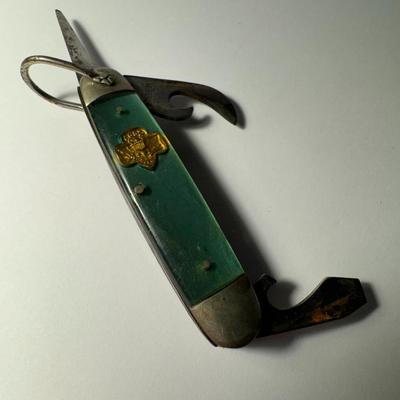
Kutmaster Girl Scout pocket knife. Here's some information about it Manufacturer: Kutmaster, a brand of Utica Cutlery Company in Utica, NY. Utica Cutlery Company began manufacturing pocket knives in 1910. Time Period: These knives were made from around 1933 or 1937 through 1989. Some sources say 1933-1989, others 1947-1980. One example was listed as from 1962. Features: It typically has carbon steel blades and clear acetate handle scales over green plastic with a gold plastic Girl Scout of America (GSA) shield. The knives may also have brass liners and nickel bolsters. 729 / 1369 -
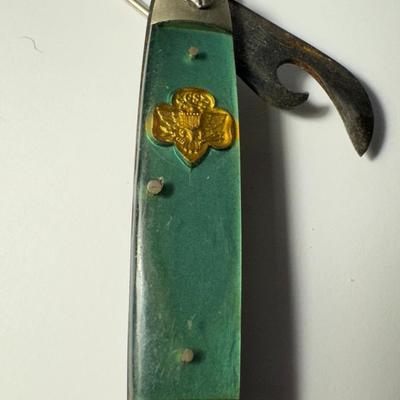
Kutmaster Girl Scout pocket knife. Here's some information about it Manufacturer: Kutmaster, a brand of Utica Cutlery Company in Utica, NY. Utica Cutlery Company began manufacturing pocket knives in 1910. Time Period: These knives were made from around 1933 or 1937 through 1989. Some sources say 1933-1989, others 1947-1980. One example was listed as from 1962. Features: It typically has carbon steel blades and clear acetate handle scales over green plastic with a gold plastic Girl Scout of America (GSA) shield. The knives may also have brass liners and nickel bolsters. 730 / 1369 -
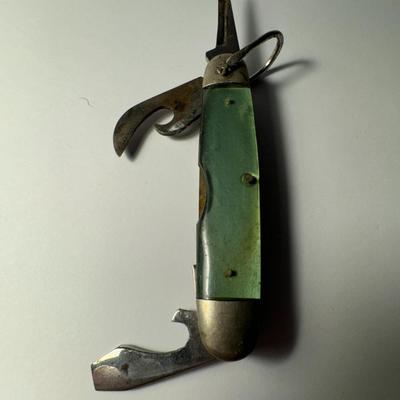
Kutmaster Girl Scout pocket knife. Here's some information about it Manufacturer: Kutmaster, a brand of Utica Cutlery Company in Utica, NY. Utica Cutlery Company began manufacturing pocket knives in 1910. Time Period: These knives were made from around 1933 or 1937 through 1989. Some sources say 1933-1989, others 1947-1980. One example was listed as from 1962. Features: It typically has carbon steel blades and clear acetate handle scales over green plastic with a gold plastic Girl Scout of America (GSA) shield. The knives may also have brass liners and nickel bolsters. 731 / 1369 -
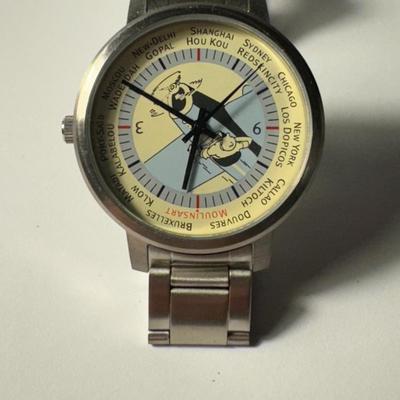
Tintin watch featuring different cities around the world and characters from the comics. Some of the city names visible on the watch face include REDSKINCITY, SHANGHAI, SYDNEY, CHICAGO, NEW YORK, CALLAO, KILTOCH, DOUVRES, MOULINSART, BRUXELLES, KLOW, MATADI, KALABELOU, PORT-SAID, MOSCOU, WADE DAH, GOPAL, and NEW DELHI. 732 / 1369 -
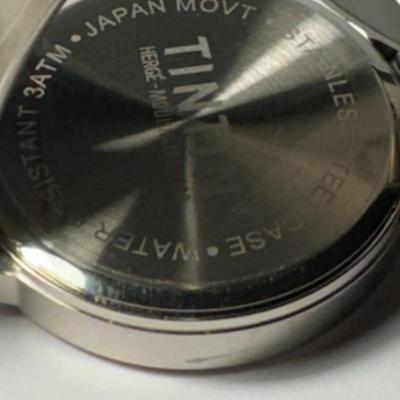
Tintin watch featuring different cities around the world and characters from the comics. Some of the city names visible on the watch face include REDSKINCITY, SHANGHAI, SYDNEY, CHICAGO, NEW YORK, CALLAO, KILTOCH, DOUVRES, MOULINSART, BRUXELLES, KLOW, MATADI, KALABELOU, PORT-SAID, MOSCOU, WADE DAH, GOPAL, and NEW DELHI. 733 / 1369 -
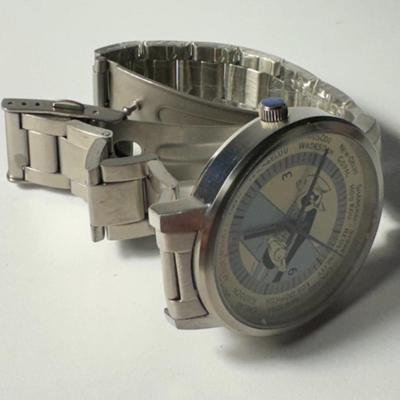
Tintin watch featuring different cities around the world and characters from the comics. Some of the city names visible on the watch face include REDSKINCITY, SHANGHAI, SYDNEY, CHICAGO, NEW YORK, CALLAO, KILTOCH, DOUVRES, MOULINSART, BRUXELLES, KLOW, MATADI, KALABELOU, PORT-SAID, MOSCOU, WADE DAH, GOPAL, and NEW DELHI. 734 / 1369 -
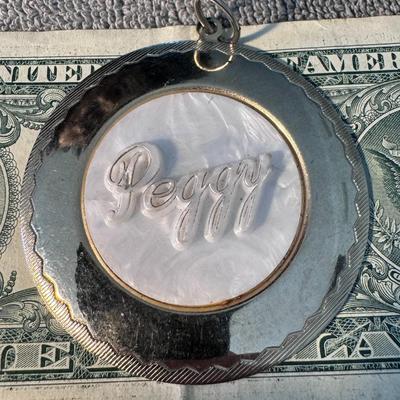
Pendant featuring the name "Peggy" in a raised, stylized script on a white, possibly mother-of-pearl or shell, background, set within a silver-toned metal border. The pendant appears to be a personalized piece of jewelry, likely worn as a necklace charm or part of a bracelet. Details about the pendant: Type: This is a personalized name pendant, a popular form of jewelry where a name or word is incorporated into the design. Materials: The outer border is a silver-colored metal, and the central, white area where "Peggy" is displayed could be mother-of-pearl, a type of shell inlay, or a similar material known for its iridescent quality. The name itself appears to be embossed or raised from this white material. Style: The script font used for "Peggy" and the overall design suggest a classic or potentially vintage aesthetic, similar to name necklaces and charms popular in various eras, including the mid-20th century. 735 / 1369 -
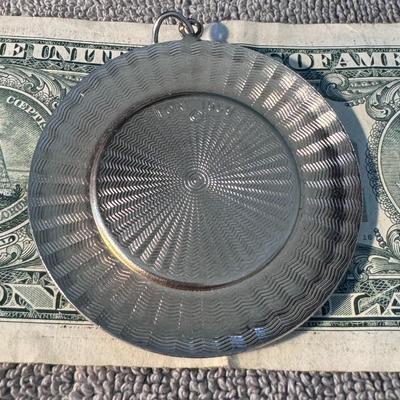
Pendant featuring the name "Peggy" in a raised, stylized script on a white, possibly mother-of-pearl or shell, background, set within a silver-toned metal border. The pendant appears to be a personalized piece of jewelry, likely worn as a necklace charm or part of a bracelet. Details about the pendant: Type: This is a personalized name pendant, a popular form of jewelry where a name or word is incorporated into the design. Materials: The outer border is a silver-colored metal, and the central, white area where "Peggy" is displayed could be mother-of-pearl, a type of shell inlay, or a similar material known for its iridescent quality. The name itself appears to be embossed or raised from this white material. Style: The script font used for "Peggy" and the overall design suggest a classic or potentially vintage aesthetic, similar to name necklaces and charms popular in various eras, including the mid-20th century. 736 / 1369 -
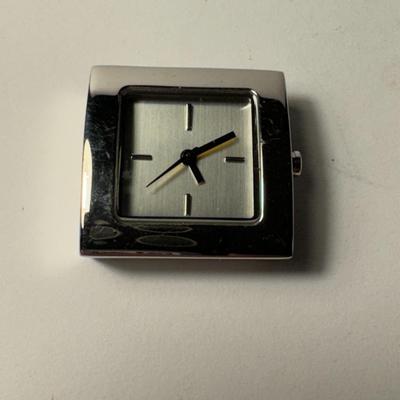
The image shows the back of a watch from The Abiquiu Collection by Robert Lee Morris. The watch is made with sterling silver, has a stainless steel back, and features a Japan quartz movement. Robert Lee Morris is an American jewelry designer and sculptor known for his unique and artistic creations, drawing inspiration from natural forms and futuristic concepts. He's been designing for several decades and his work has been featured in exhibitions and galleries. His watches, like the one pictured, is considered collectible and sought-after item 737 / 1369 -
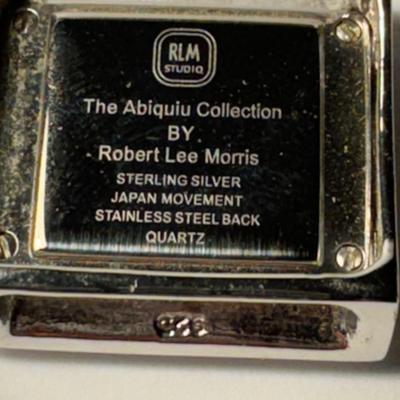
The image shows the back of a watch from The Abiquiu Collection by Robert Lee Morris. The watch is made with sterling silver, has a stainless steel back, and features a Japan quartz movement. Robert Lee Morris is an American jewelry designer and sculptor known for his unique and artistic creations, drawing inspiration from natural forms and futuristic concepts. He's been designing for several decades and his work has been featured in exhibitions and galleries. His watches, like the one pictured, is considered collectible and sought-after item 738 / 1369 -
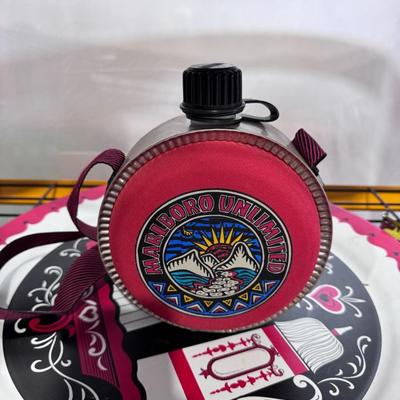
Vintage Marlboro Unlimited Coleman Canteen. Here's more information about this item: Promotional Item: This canteen was part of a line of promotional merchandise released by Marlboro, often in collaboration with outdoor gear brands like Coleman, during campaigns like "Marlboro Unlimited" or "Marlboro Adventure Team". Era: These canteens typically date back to the 1980s or 1990s. Design: The canteen features a distinctive Southwestern or "Adventure Team" themed graphic, as seen in the image, often with a fabric cover and an adjustable shoulder strap. 739 / 1369 -
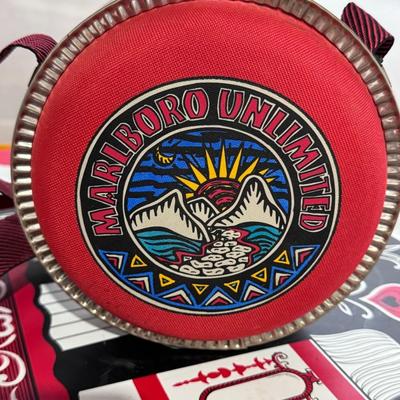
Vintage Marlboro Unlimited Coleman Canteen. Here's more information about this item: Promotional Item: This canteen was part of a line of promotional merchandise released by Marlboro, often in collaboration with outdoor gear brands like Coleman, during campaigns like "Marlboro Unlimited" or "Marlboro Adventure Team". Era: These canteens typically date back to the 1980s or 1990s. Design: The canteen features a distinctive Southwestern or "Adventure Team" themed graphic, as seen in the image, often with a fabric cover and an adjustable shoulder strap. 740 / 1369 -
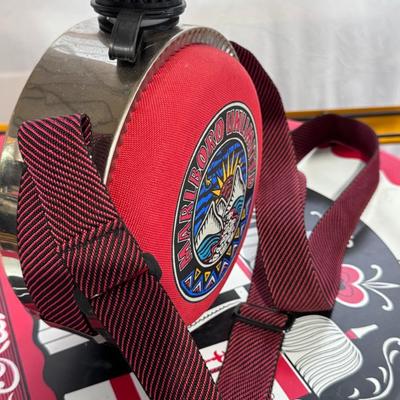
Vintage Marlboro Unlimited Coleman Canteen. Here's more information about this item: Promotional Item: This canteen was part of a line of promotional merchandise released by Marlboro, often in collaboration with outdoor gear brands like Coleman, during campaigns like "Marlboro Unlimited" or "Marlboro Adventure Team". Era: These canteens typically date back to the 1980s or 1990s. Design: The canteen features a distinctive Southwestern or "Adventure Team" themed graphic, as seen in the image, often with a fabric cover and an adjustable shoulder strap. 741 / 1369 -
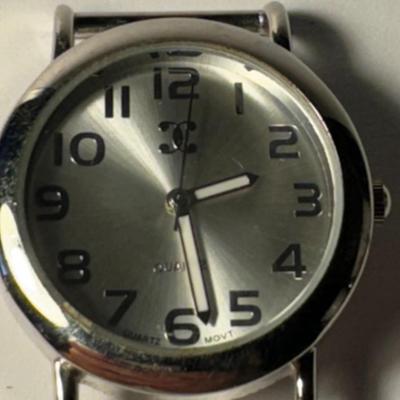
Charming Charlie women's analog wristwatch with a silver-toned case and a silver-colored dial with a sunburst finish. The watch face features black numerals marking the hours, along with a seconds hand and a push/pull crown. It has a quartz movement and displays the time in a 12-hour format. 747 / 1369 -
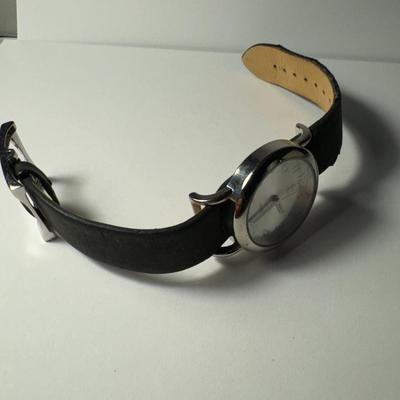
Charming Charlie women's analog wristwatch with a silver-toned case and a silver-colored dial with a sunburst finish. The watch face features black numerals marking the hours, along with a seconds hand and a push/pull crown. It has a quartz movement and displays the time in a 12-hour format. 748 / 1369 -
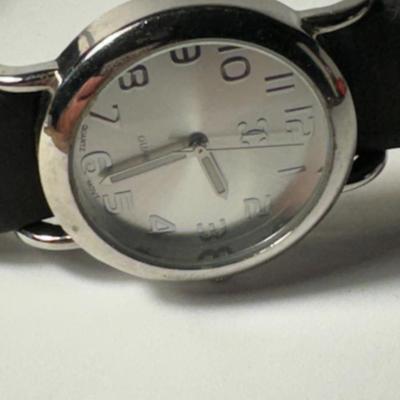
Charming Charlie women's analog wristwatch with a silver-toned case and a silver-colored dial with a sunburst finish. The watch face features black numerals marking the hours, along with a seconds hand and a push/pull crown. It has a quartz movement and displays the time in a 12-hour format. 749 / 1369 -
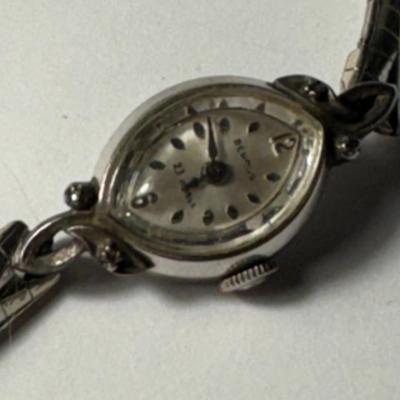
Bulova ladies' watch with a silver-toned band and an oval face. The dial features the words "Bulova" and "23 Jewels," indicating it's likely a part of or related to the Bulova 23 series. This series of watches, known for its 23-jewel movement, debuted in the mid-1950s and was produced for about 10 years. These watches are characterized by their 23-jewel, self-winding movement, unbreakable mainspring, and shock-resistant, waterproof cases, which were made in the United States. 750 / 1369 -
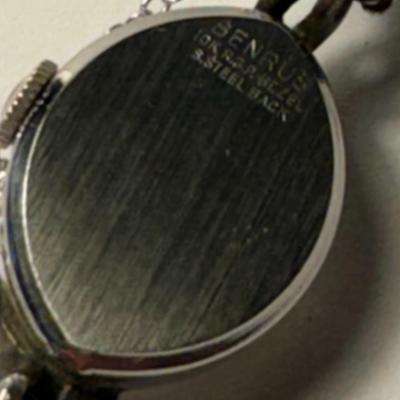
Bulova ladies' watch with a silver-toned band and an oval face. The dial features the words "Bulova" and "23 Jewels," indicating it's likely a part of or related to the Bulova 23 series. This series of watches, known for its 23-jewel movement, debuted in the mid-1950s and was produced for about 10 years. These watches are characterized by their 23-jewel, self-winding movement, unbreakable mainspring, and shock-resistant, waterproof cases, which were made in the United States. 751 / 1369 -
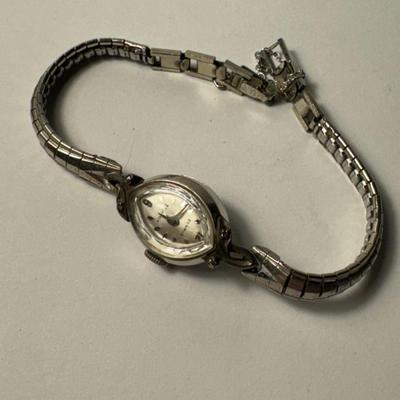
Bulova ladies' watch with a silver-toned band and an oval face. The dial features the words "Bulova" and "23 Jewels," indicating it's likely a part of or related to the Bulova 23 series. This series of watches, known for its 23-jewel movement, debuted in the mid-1950s and was produced for about 10 years. These watches are characterized by their 23-jewel, self-winding movement, unbreakable mainspring, and shock-resistant, waterproof cases, which were made in the United States. 752 / 1369 -
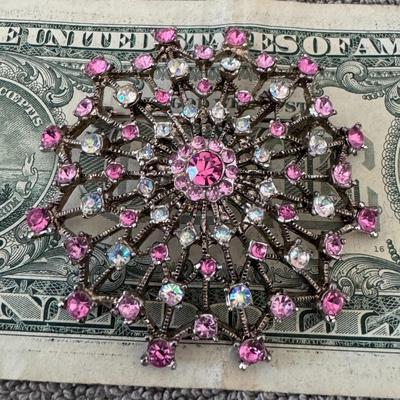
VTV Labella Signed Silver Tone Starburst Brooch featuring both pink and AB (Aurora Borealis) rhinestones. This piece is a vintage brooch, likely from the Mid-Century Modern (MCM) era, known for its radiant starburst design and intricate arrangement of clear and pink rhinestones. Key features and details: Brand/Signature: VTV Labella. Style: Starburst or Sunburst, typical of Mid-Century Modern (MCM) jewelry. Materials: Silver-tone metal base adorned with clear and pink rhinestones, including AB (Aurora Borealis) rhinestones, which have a special iridescent coating. 753 / 1369 -
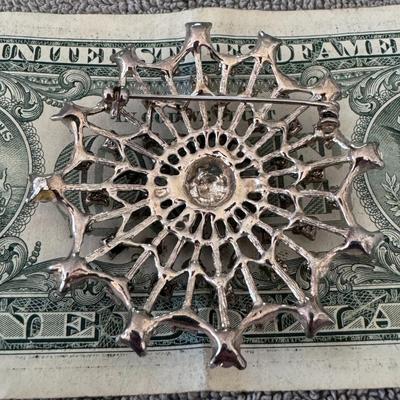
VTV Labella Signed Silver Tone Starburst Brooch featuring both pink and AB (Aurora Borealis) rhinestones. This piece is a vintage brooch, likely from the Mid-Century Modern (MCM) era, known for its radiant starburst design and intricate arrangement of clear and pink rhinestones. Key features and details: Brand/Signature: VTV Labella. Style: Starburst or Sunburst, typical of Mid-Century Modern (MCM) jewelry. Materials: Silver-tone metal base adorned with clear and pink rhinestones, including AB (Aurora Borealis) rhinestones, which have a special iridescent coating. 754 / 1369 -
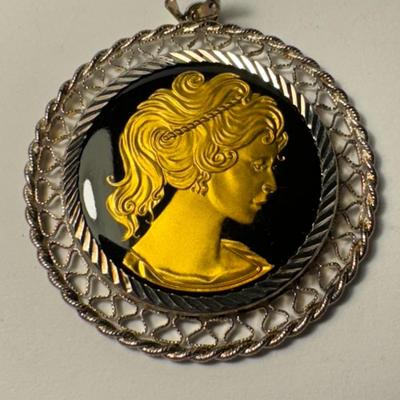
A round pendant featuring a profile of a woman with flowing hair, carved in what appears to be a gold-toned material against a black background. This central image is surrounded by an openwork silver border, suggesting a setting made of sterling silver. The piece is likely an antique or vintage item, possibly from the Art Nouveau era, given the style of the woman's hair and the overall aesthetic. It's carved into a 1/4 ounce 0.999 fine silver coin and enameled with green and gold accents. The enamel is sealed with clear resin to enhance durability. The pendant has a diameter of 1 3/8 inches and includes a 1/4 inch bail for attaching a chain. The weight is around 11.7 grams. 766 / 1369 -
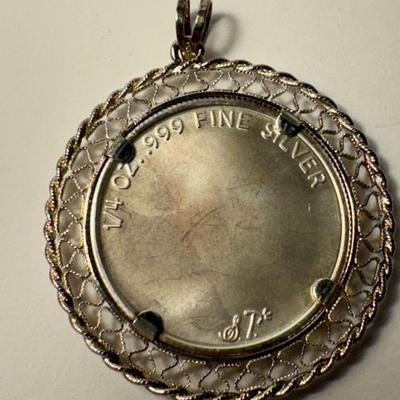
A round pendant featuring a profile of a woman with flowing hair, carved in what appears to be a gold-toned material against a black background. This central image is surrounded by an openwork silver border, suggesting a setting made of sterling silver. The piece is likely an antique or vintage item, possibly from the Art Nouveau era, given the style of the woman's hair and the overall aesthetic. It's carved into a 1/4 ounce 0.999 fine silver coin and enameled with green and gold accents. The enamel is sealed with clear resin to enhance durability. The pendant has a diameter of 1 3/8 inches and includes a 1/4 inch bail for attaching a chain. The weight is around 11.7 grams. 767 / 1369 -
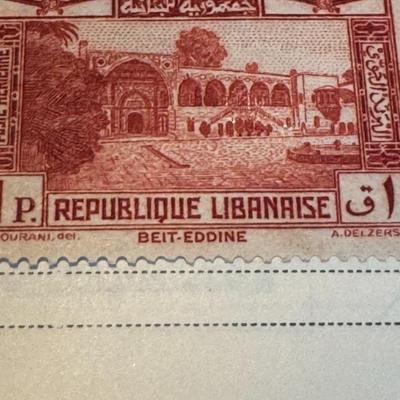
Lebanese postage stamp from 1940. The stamp features the Beit-ed-Dine Palace and is an airmail stamp. It is red and has the text "REPUBLIQUE LIBANAISE" and "BEIT-EDDINE" printed on it. It's a mint never hinged (MNH) stamp, meaning it has not been used for postage and is in pristine condition. The Scott number for this particular stamp is C69 (AP15). In 1940, several stamp series were issued in Lebanon. This stamp is part of a series that featured the Beit-Eddine Palace and the Acropolis of Baalbek, which was issued between 1937 and 1940 779 / 1369 -
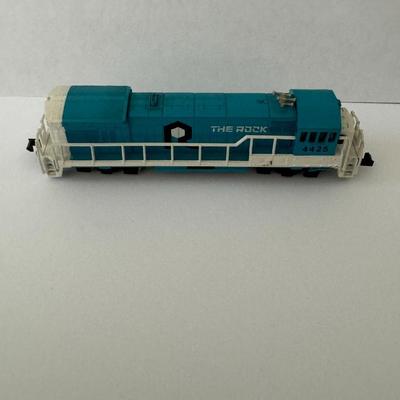
Bachmann HO Scale GE U36B Diesel Locomotive in the "The Rock" (Chicago, Rock Island and Pacific Railroad) livery, with the road number 4425. Key details: Manufacturer: Bachmann. Model: GE U36B Diesel Locomotive. Railroad: "The Rock" (Chicago, Rock Island and Pacific Railroad). Road Number: 4425. Scale: HO Scale. 780 / 1369 -
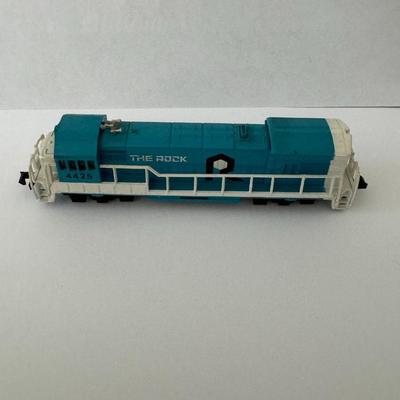
Bachmann HO Scale GE U36B Diesel Locomotive in the "The Rock" (Chicago, Rock Island and Pacific Railroad) livery, with the road number 4425. Key details: Manufacturer: Bachmann. Model: GE U36B Diesel Locomotive. Railroad: "The Rock" (Chicago, Rock Island and Pacific Railroad). Road Number: 4425. Scale: HO Scale. 781 / 1369 -

Bachmann HO Scale GE U36B Diesel Locomotive in the "The Rock" (Chicago, Rock Island and Pacific Railroad) livery, with the road number 4425. Key details: Manufacturer: Bachmann. Model: GE U36B Diesel Locomotive. Railroad: "The Rock" (Chicago, Rock Island and Pacific Railroad). Road Number: 4425. Scale: HO Scale. 782 / 1369 -
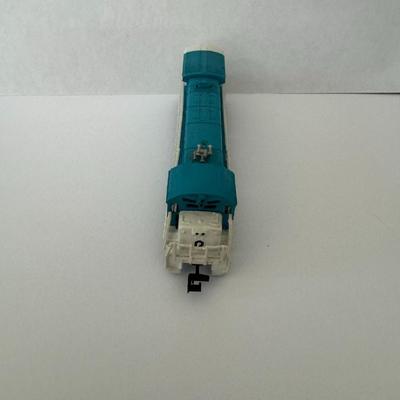
Bachmann HO Scale GE U36B Diesel Locomotive in the "The Rock" (Chicago, Rock Island and Pacific Railroad) livery, with the road number 4425. Key details: Manufacturer: Bachmann. Model: GE U36B Diesel Locomotive. Railroad: "The Rock" (Chicago, Rock Island and Pacific Railroad). Road Number: 4425. Scale: HO Scale. 783 / 1369 -
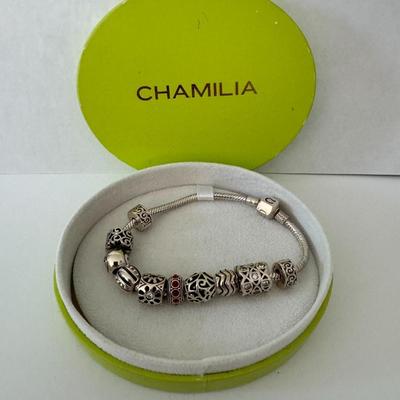
Chamilia charm bracelet in its original packaging. Chamilia is a brand known for its interchangeable jewelry, particularly charm bracelets that allow for personalization with various beads and charms. Here's more information about Chamilia bracelets: Customization: Chamilia offers a wide assortment of charms, beads, bracelets, necklaces, earrings, and locks, enabling users to create unique and personalized jewelry pieces. Materials: The charms and beads are crafted from high-quality materials, including sterling silver, 14k gold, and Swarovski® crystals, known for their brilliance and craftsmanship. Interchangeability: Chamilia charms and beads are designed to be compatible with Chamilia bracelets and are also often interchangeable with other similar style bracelets, such as Pandora bracelets, offering versatility in styling. Themes and Collections: The brand features various themed collections and individual charms inspired by romantic sentiments, family motifs, hobbies, and popular culture, including Disney-themed charms. Availability: While Chamilia charms and bracelets can be found at various retailers, including online marketplaces like Amazon and eBay, Chamilia production has reportedly ceased, making some items more difficult to find and potentially sought after by collectors 784 / 1369 -
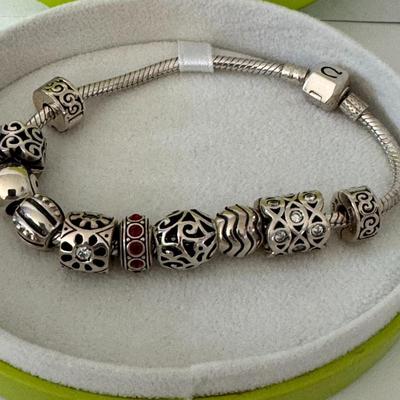
Chamilia charm bracelet in its original packaging. Chamilia is a brand known for its interchangeable jewelry, particularly charm bracelets that allow for personalization with various beads and charms. Here's more information about Chamilia bracelets: Customization: Chamilia offers a wide assortment of charms, beads, bracelets, necklaces, earrings, and locks, enabling users to create unique and personalized jewelry pieces. Materials: The charms and beads are crafted from high-quality materials, including sterling silver, 14k gold, and Swarovski® crystals, known for their brilliance and craftsmanship. Interchangeability: Chamilia charms and beads are designed to be compatible with Chamilia bracelets and are also often interchangeable with other similar style bracelets, such as Pandora bracelets, offering versatility in styling. Themes and Collections: The brand features various themed collections and individual charms inspired by romantic sentiments, family motifs, hobbies, and popular culture, including Disney-themed charms. Availability: While Chamilia charms and bracelets can be found at various retailers, including online marketplaces like Amazon and eBay, Chamilia production has reportedly ceased, making some items more difficult to find and potentially sought after by collectors 785 / 1369 -
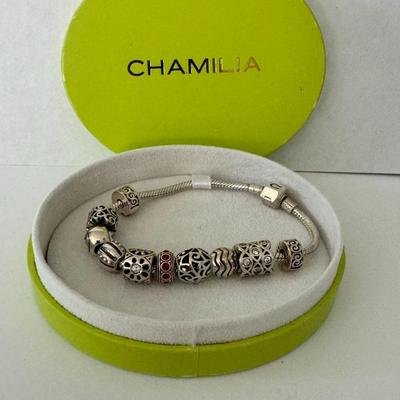
Chamilia charm bracelet in its original packaging. Chamilia is a brand known for its interchangeable jewelry, particularly charm bracelets that allow for personalization with various beads and charms. Here's more information about Chamilia bracelets: Customization: Chamilia offers a wide assortment of charms, beads, bracelets, necklaces, earrings, and locks, enabling users to create unique and personalized jewelry pieces. Materials: The charms and beads are crafted from high-quality materials, including sterling silver, 14k gold, and Swarovski® crystals, known for their brilliance and craftsmanship. Interchangeability: Chamilia charms and beads are designed to be compatible with Chamilia bracelets and are also often interchangeable with other similar style bracelets, such as Pandora bracelets, offering versatility in styling. Themes and Collections: The brand features various themed collections and individual charms inspired by romantic sentiments, family motifs, hobbies, and popular culture, including Disney-themed charms. Availability: While Chamilia charms and bracelets can be found at various retailers, including online marketplaces like Amazon and eBay, Chamilia production has reportedly ceased, making some items more difficult to find and potentially sought after by collectors 786 / 1369 -
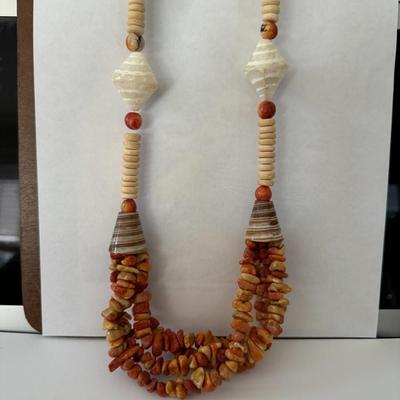
Striking multi-strand necklace featuring natural carnelian chip beads, known for their vibrant red and orange hues. Key features of the necklace: Carnelian Chip Strands: The primary component consists of multiple strands of irregular, polished carnelian chips, creating a layered and textured effect around the base of the necklace. Wooden Beads: The necklace's upper portion and closure appear to be crafted from light-colored, smooth wooden beads, providing a contrasting element to the carnelian chips. Banded Agate Cones: Separating the wooden beads from the carnelian strands are distinctive conical beads, which exhibit natural banding patterns, likely made from banded agate. These cones add a unique design element and transition between the different materials. Overall Style: The combination of natural materials and varied textures suggests a bohemian, earthy, or possibly vintage style, reminiscent of pieces using natural gemstones and organic elements. 787 / 1369 -
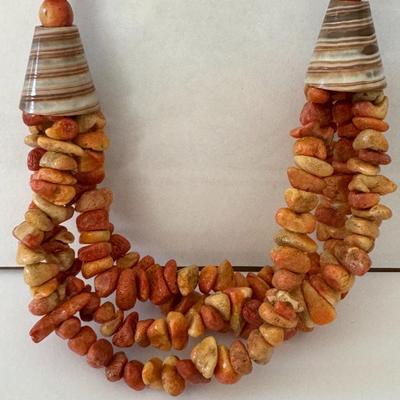
Striking multi-strand necklace featuring natural carnelian chip beads, known for their vibrant red and orange hues. Key features of the necklace: Carnelian Chip Strands: The primary component consists of multiple strands of irregular, polished carnelian chips, creating a layered and textured effect around the base of the necklace. Wooden Beads: The necklace's upper portion and closure appear to be crafted from light-colored, smooth wooden beads, providing a contrasting element to the carnelian chips. Banded Agate Cones: Separating the wooden beads from the carnelian strands are distinctive conical beads, which exhibit natural banding patterns, likely made from banded agate. These cones add a unique design element and transition between the different materials. Overall Style: The combination of natural materials and varied textures suggests a bohemian, earthy, or possibly vintage style, reminiscent of pieces using natural gemstones and organic elements. 788 / 1369 -
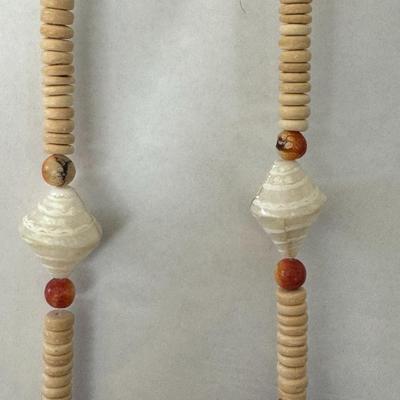
Striking multi-strand necklace featuring natural carnelian chip beads, known for their vibrant red and orange hues. Key features of the necklace: Carnelian Chip Strands: The primary component consists of multiple strands of irregular, polished carnelian chips, creating a layered and textured effect around the base of the necklace. Wooden Beads: The necklace's upper portion and closure appear to be crafted from light-colored, smooth wooden beads, providing a contrasting element to the carnelian chips. Banded Agate Cones: Separating the wooden beads from the carnelian strands are distinctive conical beads, which exhibit natural banding patterns, likely made from banded agate. These cones add a unique design element and transition between the different materials. Overall Style: The combination of natural materials and varied textures suggests a bohemian, earthy, or possibly vintage style, reminiscent of pieces using natural gemstones and organic elements. 789 / 1369 -
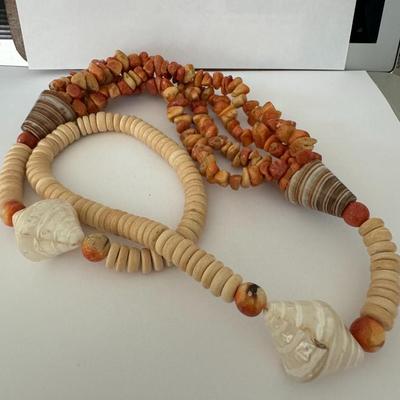
Striking multi-strand necklace featuring natural carnelian chip beads, known for their vibrant red and orange hues. Key features of the necklace: Carnelian Chip Strands: The primary component consists of multiple strands of irregular, polished carnelian chips, creating a layered and textured effect around the base of the necklace. Wooden Beads: The necklace's upper portion and closure appear to be crafted from light-colored, smooth wooden beads, providing a contrasting element to the carnelian chips. Banded Agate Cones: Separating the wooden beads from the carnelian strands are distinctive conical beads, which exhibit natural banding patterns, likely made from banded agate. These cones add a unique design element and transition between the different materials. Overall Style: The combination of natural materials and varied textures suggests a bohemian, earthy, or possibly vintage style, reminiscent of pieces using natural gemstones and organic elements. 790 / 1369 -
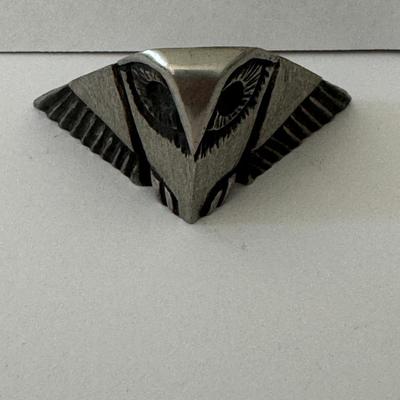
vintage pewter owl figurine or paperweight, characterized by its minimalist and somewhat abstract design. Here are some details about this type of item: Material: It is made of pewter, a metal alloy traditionally composed of tin, often with other metals like copper, antimony, or bismuth. Design: The figurine features a stylized representation of an owl, with large, prominent eyes and defined wing patterns, reflecting a minimalist or mid-century modern aesthetic. Purpose: Given its solid appearance, it likely serves as a decorative sculpture, a paperweight to hold down documents, or both. Origin/Era: Similar items are often described as "vintage" and can date back to periods like the 1970s or 1980s, with some potentially originating from specific artisans or companies known for pewter works. Collectibility: Vintage pewter owl figurines are collectible items, often sought after by those interested in birds, owls, or mid-century modern decor 791 / 1369 -
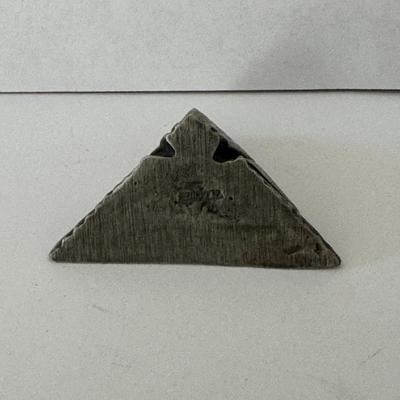
vintage pewter owl figurine or paperweight, characterized by its minimalist and somewhat abstract design. Here are some details about this type of item: Material: It is made of pewter, a metal alloy traditionally composed of tin, often with other metals like copper, antimony, or bismuth. Design: The figurine features a stylized representation of an owl, with large, prominent eyes and defined wing patterns, reflecting a minimalist or mid-century modern aesthetic. Purpose: Given its solid appearance, it likely serves as a decorative sculpture, a paperweight to hold down documents, or both. Origin/Era: Similar items are often described as "vintage" and can date back to periods like the 1970s or 1980s, with some potentially originating from specific artisans or companies known for pewter works. Collectibility: Vintage pewter owl figurines are collectible items, often sought after by those interested in birds, owls, or mid-century modern decor 792 / 1369 -
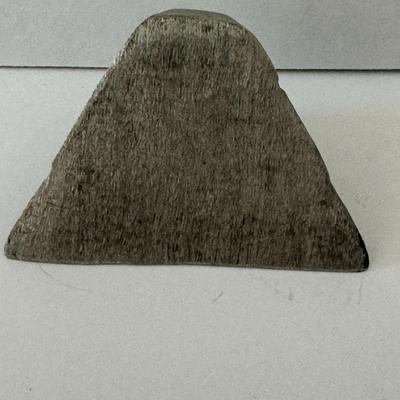
vintage pewter owl figurine or paperweight, characterized by its minimalist and somewhat abstract design. Here are some details about this type of item: Material: It is made of pewter, a metal alloy traditionally composed of tin, often with other metals like copper, antimony, or bismuth. Design: The figurine features a stylized representation of an owl, with large, prominent eyes and defined wing patterns, reflecting a minimalist or mid-century modern aesthetic. Purpose: Given its solid appearance, it likely serves as a decorative sculpture, a paperweight to hold down documents, or both. Origin/Era: Similar items are often described as "vintage" and can date back to periods like the 1970s or 1980s, with some potentially originating from specific artisans or companies known for pewter works. Collectibility: Vintage pewter owl figurines are collectible items, often sought after by those interested in birds, owls, or mid-century modern decor 793 / 1369 -
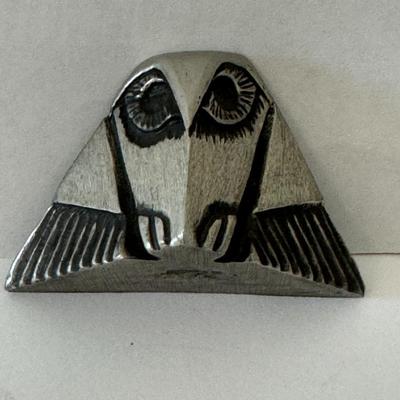
vintage pewter owl figurine or paperweight, characterized by its minimalist and somewhat abstract design. Here are some details about this type of item: Material: It is made of pewter, a metal alloy traditionally composed of tin, often with other metals like copper, antimony, or bismuth. Design: The figurine features a stylized representation of an owl, with large, prominent eyes and defined wing patterns, reflecting a minimalist or mid-century modern aesthetic. Purpose: Given its solid appearance, it likely serves as a decorative sculpture, a paperweight to hold down documents, or both. Origin/Era: Similar items are often described as "vintage" and can date back to periods like the 1970s or 1980s, with some potentially originating from specific artisans or companies known for pewter works. Collectibility: Vintage pewter owl figurines are collectible items, often sought after by those interested in birds, owls, or mid-century modern decor 794 / 1369 -
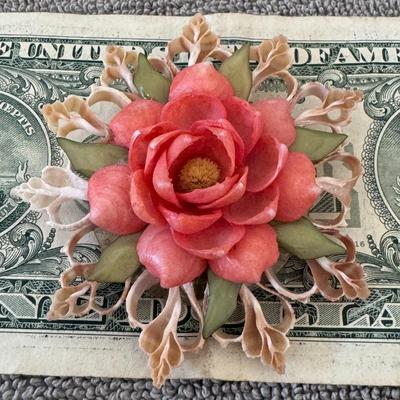
1940's South Pacific 795 / 1369 -
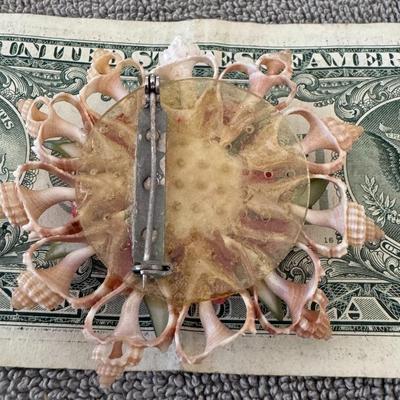
1940's South Pacific 796 / 1369 -
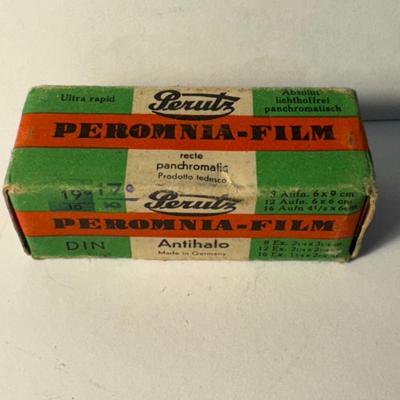
Vintage box of Perutz Peromnia-Film, specifically a type of black and white panchromatic film produced in Germany by the Perutz company. Here are some details about the film based on the image and search results: Type: Panchromatic black and white film with "Ultra rapid" and "Absolut lichthof frei" (absolutely antihalo) features. Format: The box indicates it's designed for multiple formats within roll film, including 3 exposures of 6x9 cm, 12 exposures of 6x6 cm, and 16 exposures of 4.5x6 cm. These formats typically correspond to 120 roll film, although 620 versions of Peromnia film also existed. Speed: While the image doesn't explicitly state the speed in ASA, other sources mention Peromnia 21 as being 100 ASA (equivalent to DIN 21), and Peromnia 25 as 250 ASA (equivalent to DIN 25). Origin and Collectibility: Made in Germany, these vintage films are now primarily considered collectibles or for experimental photography due to their age and likely expired nature. Features: Noted for its anti-halation properties due to an opaque black backing that bleached during processing, unlike typical 35mm films that relied on a grey base 797 / 1369 -
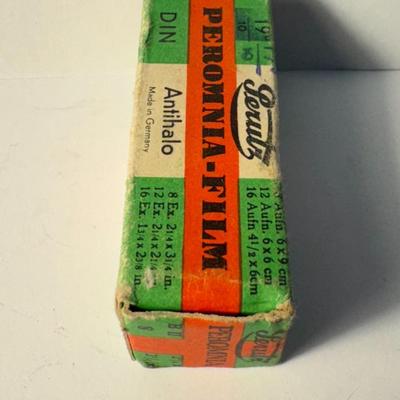
Vintage box of Perutz Peromnia-Film, specifically a type of black and white panchromatic film produced in Germany by the Perutz company. Here are some details about the film based on the image and search results: Type: Panchromatic black and white film with "Ultra rapid" and "Absolut lichthof frei" (absolutely antihalo) features. Format: The box indicates it's designed for multiple formats within roll film, including 3 exposures of 6x9 cm, 12 exposures of 6x6 cm, and 16 exposures of 4.5x6 cm. These formats typically correspond to 120 roll film, although 620 versions of Peromnia film also existed. Speed: While the image doesn't explicitly state the speed in ASA, other sources mention Peromnia 21 as being 100 ASA (equivalent to DIN 21), and Peromnia 25 as 250 ASA (equivalent to DIN 25). Origin and Collectibility: Made in Germany, these vintage films are now primarily considered collectibles or for experimental photography due to their age and likely expired nature. Features: Noted for its anti-halation properties due to an opaque black backing that bleached during processing, unlike typical 35mm films that relied on a grey base 798 / 1369 -
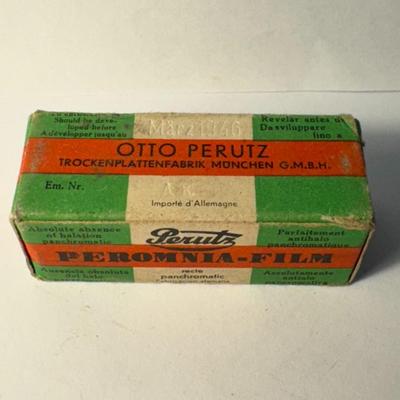
Vintage box of Perutz Peromnia-Film, specifically a type of black and white panchromatic film produced in Germany by the Perutz company. Here are some details about the film based on the image and search results: Type: Panchromatic black and white film with "Ultra rapid" and "Absolut lichthof frei" (absolutely antihalo) features. Format: The box indicates it's designed for multiple formats within roll film, including 3 exposures of 6x9 cm, 12 exposures of 6x6 cm, and 16 exposures of 4.5x6 cm. These formats typically correspond to 120 roll film, although 620 versions of Peromnia film also existed. Speed: While the image doesn't explicitly state the speed in ASA, other sources mention Peromnia 21 as being 100 ASA (equivalent to DIN 21), and Peromnia 25 as 250 ASA (equivalent to DIN 25). Origin and Collectibility: Made in Germany, these vintage films are now primarily considered collectibles or for experimental photography due to their age and likely expired nature. Features: Noted for its anti-halation properties due to an opaque black backing that bleached during processing, unlike typical 35mm films that relied on a grey base 799 / 1369 -
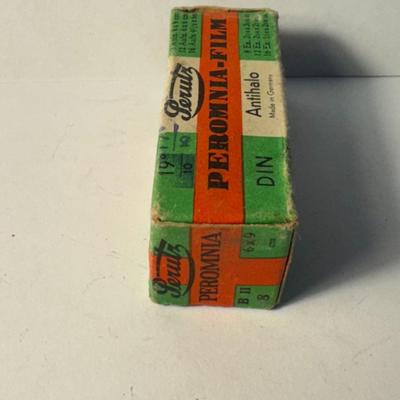
Vintage box of Perutz Peromnia-Film, specifically a type of black and white panchromatic film produced in Germany by the Perutz company. Here are some details about the film based on the image and search results: Type: Panchromatic black and white film with "Ultra rapid" and "Absolut lichthof frei" (absolutely antihalo) features. Format: The box indicates it's designed for multiple formats within roll film, including 3 exposures of 6x9 cm, 12 exposures of 6x6 cm, and 16 exposures of 4.5x6 cm. These formats typically correspond to 120 roll film, although 620 versions of Peromnia film also existed. Speed: While the image doesn't explicitly state the speed in ASA, other sources mention Peromnia 21 as being 100 ASA (equivalent to DIN 21), and Peromnia 25 as 250 ASA (equivalent to DIN 25). Origin and Collectibility: Made in Germany, these vintage films are now primarily considered collectibles or for experimental photography due to their age and likely expired nature. Features: Noted for its anti-halation properties due to an opaque black backing that bleached during processing, unlike typical 35mm films that relied on a grey base 800 / 1369
Photos 701 - 800 of 1369
Per page:
